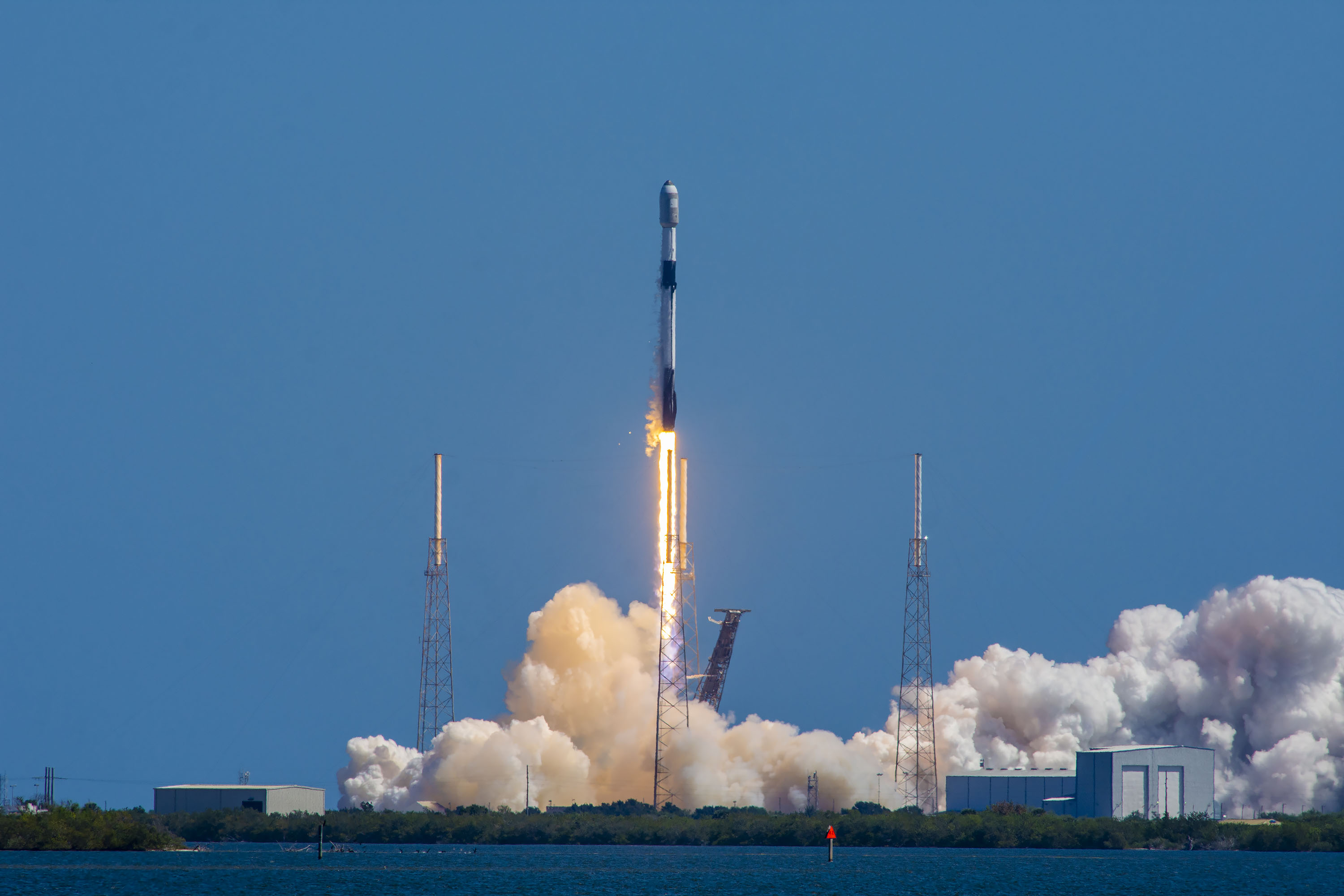Update for April 25 at 9:30 a.m. EDT (1330 GMT): SpaceX is now targeting Wednesday (April 26) at 9:40 a.m. EDT (1340 GMT) for the launch of 46 Starlink satellites atop a Falcon 9 rocket.
SpaceX plans to launch another big batch of its Starlink internet satellites and land the returning rocket at sea on Wednesday morning (April 26), and you can watch the action live.
A Falcon 9 rocket carrying 46 Starlink spacecraft is scheduled to lift off from California's Vandenberg Space Force Base Wednesday at 9:40 a.m. EDT (1340 GMT; 6:40 a.m. local California time).
Watch the launch live here at Space.com, courtesy of SpaceX, or directly via the company. Coverage is expected to start about five minutes before liftoff.
Related: Starlink satellites: Everything you need to know

If all goes according to plan, the Falcon 9 will come back to Earth for a landing about 8.5 minutes after liftoff, settling softly onto the deck of the SpaceX droneship Of Course I Still Love You, which will be stationed off the California coast.
It will be the 13th launch and landing for this particular booster, according to a SpaceX mission description. Impressive though that number is, it falls a bit short of SpaceX's booster reuse record of 15 flights.
The Falcon 9's upper stage, meanwhile, will continue hauling the 46 Starlink spacecraft to low Earth orbit, where they'll be deployed about 59 minutes after liftoff.
Starlink is SpaceX's huge and ever-growing broadband megaconstellation. It currently consists of about 4,000 operational satellites, but that number could eventually balloon to more than 40,000.
Tuesday's launch will be the 26th orbital mission of the year for SpaceX. The company also launched a high-profile non-orbital mission last week — the first-ever test flight of a fully stacked Starship, the giant vehicle that SpaceX is developing to get people and cargo to the moon, Mars and beyond.
Starship performed relatively well on the debut flight, which lifted off from SpaceX's Starbase facility in South Texas. The 394-foot-tall (120 meters) vehicle reached a maximum altitude of 24 miles (39 kilometers) before suffering several problems that impelled SpaceX to trigger a self-destruct high in the skies over the Gulf of Mexico.
Mike Wall is the author of "Out There" (Grand Central Publishing, 2018; illustrated by Karl Tate), a book about the search for alien life. Follow him on Twitter @michaeldwall. Follow us @Spacedotcom, or on Facebook and Instagram.







